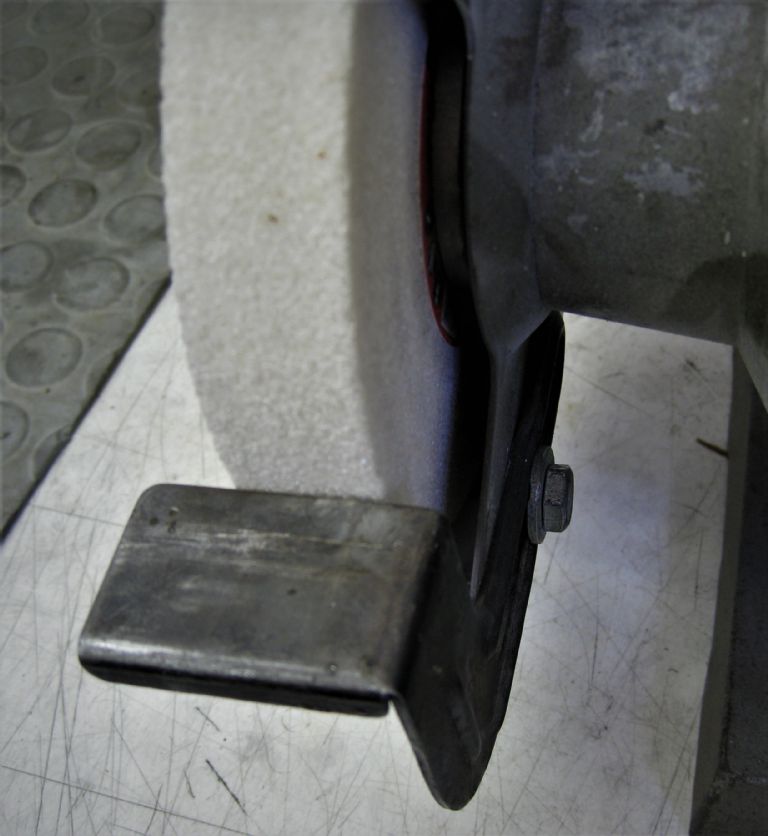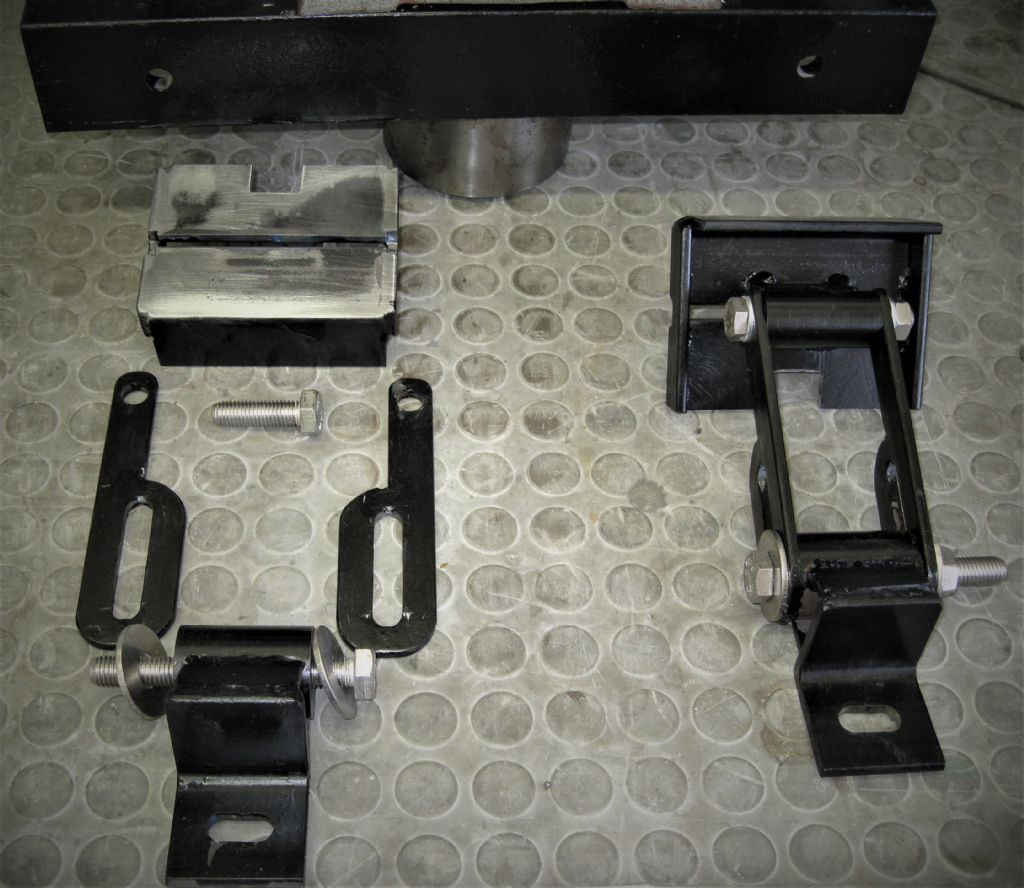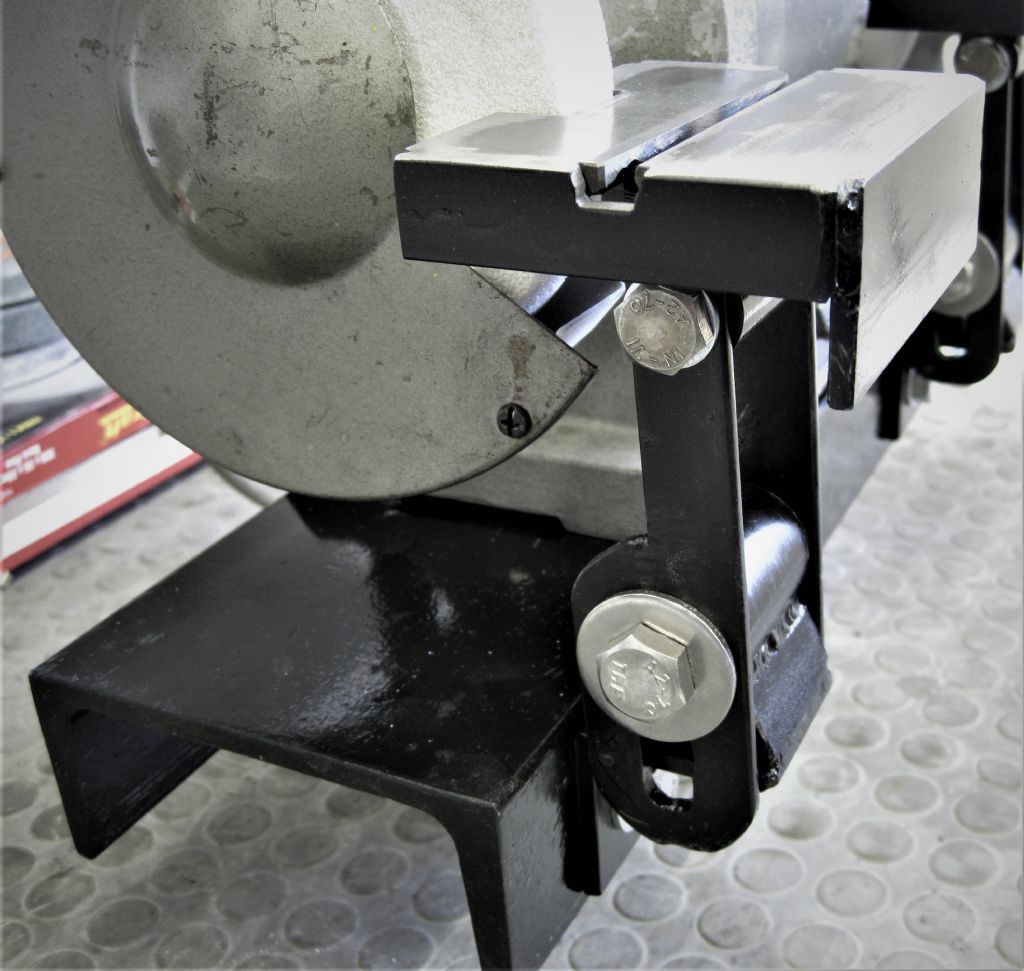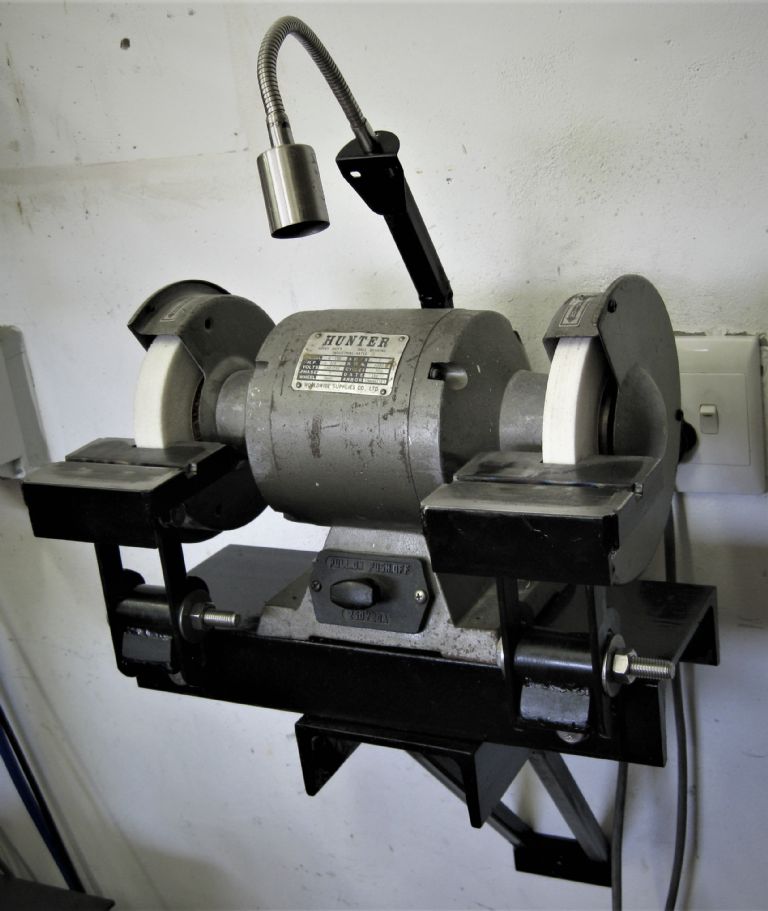I have one of those chinese 6" bench grinder – had it for maybe 30 years now. I purchased some new Aluminium Oxide wheels for it, and that started a whole saga!
These wheels, 150mm diameter and one is 25mm the other 20mm thick, are supplied by a major tooling retailer, TorkCraft.
When I fitted the wheels they were hugely out of balance, not only concentricity, but side to side as well. So the pain started. First I tried to get them running true side to side. This proved impossible. The dished 2.5mm thick metal 'washers' or hubs that grip the wheels are themselves not true. In addition the grinder shaft is 12.6mm, but the shoulder against which said hubs press, is only 1.4mm larger than the shaft within the wheel, ie, that part of the shaft is 14mm OD. That leaves very little shoulder for the hub to butt up against. On top of it, the wheel has 32mm holes and they supply crappy plastic bushes to fit – the bush OD is around 31.5mm and ID is 12.9mm
All in all a mess! So, first I made new hubs with integral wheel bushings, that fitted the grinder shaft very snugly, and fitted the 32mm hole in the wheel with just a little finger pressure. This would keep the wheel square on the bushes and flat against the hub face.
Fitted it all to the grinder, and almost no change! The grinder vibrated the whole table it stood on – It felt really unsafe!
I then used a fixed edge tool up against each wheel face and side, while turning the wheel by hand to see the runout. The Hubs show around 0.1mm side runout, at the hub perophery. ( hubs are 65mm diameter).
The left wheel shows 1.2mm runout at the periphery, the right 1.4mm….BUT the runout is not that of a flat disc – choosing a high point and rotating 1/4 turn brings the reading down to 0.7mm, then 1/8 turn more it goes up to 1.1mm, then a little more it goes to 0.3mm etc… The wheels sides are wavy! Then I measured the wheel thickness, and the 25mm wheel varies by 0.9mm, the 20mm wheel by 0.7mm. If I could get good quality, reputable wheels I would just ditch these and buy again! But here in Namibia, difficult..
So I decided to try dress these wheels true…
Of course we all know the crappy pressed sheet metal rests these grinder come with – well, I lived with those for the grinders 30 year life..I took one wheel off – impossible to try true the wheel with both vibrating the grinder apart!
The vibration was still so bad, that when I tried to hold the diamond dresser still against the 'rest' trying to just touch the wheel and keep it steady, it was impossible. The rest was vibrating to its own tune, and the wheel was being dressed to some strange standing wave shape!
So….Next, make new rests, and a stand, and get it all steady….
Which I did, new swivel stand, new rests made from 5mm flat plate, angle, some 30mm and 25mm shafting, bolted the whole thing to the wall, and finally manage to dress the wheels to flat and true!
You purchase a 'cheap' off-hand bench grinder to do simple tasks with – sharpen a chisel, drill bit, center punch, and when you fit new wheels, all the worlds shoddy quality conspires to screw you!
Some photos..
The lousy pressed 1.2mm factory rests…

New parts for the left and rights rests

Base is a 140mmx50mmx10mm channel iron.Picture show adjustable left rest in place. Rest base plate has a 6mm slot in it – Will make some guide for simply face grinding of lathe tools maybe..

And there it is , bolted to the wall!
The rests can tilt to any angle, and be raised or lowered.

3 days of work, just because I bought new wheels..
Joe
Edited By Joseph Noci 1 on 05/10/2017 20:51:47
John MC.








